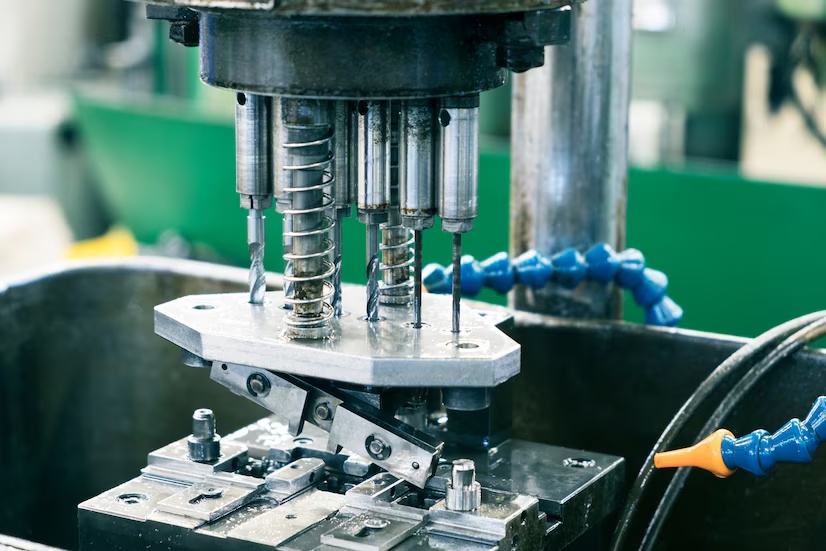Die casting, a cornerstone of metalworking reigns supreme in producing precise and complex metal parts. But this powerful process isn’t a one-size-fits-all solution. Several variations cater to specific needs and material properties. Let’s delve into the fascinating world of die casting types, exploring their defining characteristics and applications.
1. Hot Chamber Die Casting (The Speedy Choice):
Process: The mold manufacturer China followed the most common variation, the molten metal is held in a chamber attached to the shot sleeve. A plunger forces the metal into the mold cavity under high pressure. Think of it as a giant syringe constantly refilled with molten metal, ready for injection.
Advantages: Hot chamber die casting offers the fastest cycle times due to the readily available molten metal. It’s ideal for low-melting point alloys like zinc, magnesium, and tin. Additionally, the process is cost-effective for high-volume production runs.
Limitations: Hot chamber die casting might not be suitable for alloys with high melting points due to limitations in maintaining consistent temperature in the holding chamber. Also, the constant contact of the molten metal with the iron pot can lead to iron contamination in the cast parts.
Applications: Hot chamber of Die casting China is widely used for automotive components (door handles, brackets), electronics housings (laptop cases), and toys.
2. Cold Chamber Die Casting (For Precise High-Melting Point Alloys):
Process: Here, the molten metal is melted in a separate furnace and then transferred to a shot sleeve using a ladle. The plunger in the shot sleeve injects the metal into the mold cavity. Imagine a separate pot constantly melting the metal, ready to be ladled and injected into the mold.
Advantages: Cold chamber die casting offers better temperature control, making it ideal for high-melting point alloys like aluminum and copper. This method also minimizes iron contamination, leading to parts with higher mechanical properties.
Limitations: Compared to hot chamber die casting, cycle times can be slightly slower due to the additional step of transferring molten metal from the furnace. Additionally, the initial investment for the cold chamber setup might be higher.
Applications: Cold chamber die casting is used for structural components (engine blocks, wheels), aerospace parts (landing gear components), and high-performance heat sinks.
3. Vacuum Die Casting (Combating Porosity):
Process: This variation builds upon the principles of cold chamber die casting. However, after the metal is injected into the mold cavity, a vacuum is applied to extract any trapped air or gases. This ensures a denser and porosity-free cast part. Imagine a vacuum cleaner sucking out any air bubbles trapped within the molten metal.
Advantages: Vacuum die casting minimizes porosity, leading to parts with superior mechanical properties and pressure tightness. This makes it suitable for applications demanding high integrity, like engine components or hydraulic parts.
Limitations: The additional step of applying a vacuum adds complexity to the process, increasing the cycle time and cost. It’s typically used for specific applications where porosity is a critical concern.
Applications: Vacuum die casting is used for automotive parts (engine blocks, transmission components), aerospace components (landing gear parts), and hydraulic components (valve bodies).
4. Low-Pressure Die Casting (For Fillets and Thin Walls):
Process: This technique utilizes a low-pressure injection process to fill the mold cavity. The molten metal is held in a crucible under low pressure and then forced into the mold cavity using compressed air. Imagine a gentle push instead of a high-pressure injection.
Advantages: Low-pressure die casting excels at producing parts with complex shapes, thin walls, and intricate details. The lower pressure minimizes turbulence within the molten metal, leading to a smoother surface finish. This method is also suitable for casting parts with inserts (pre-placed components within the mold).
Limitations: Due to the lower pressure, cycle times can be longer compared to conventional die casting methods. Additionally, this process might not be suitable for all alloys, particularly those requiring rapid solidification.
Applications: Low-pressure die casting is used for electronic components (heat sinks, housings), automotive parts (intake manifolds), and medical devices (implant components).
Verdict: Choosing the Right Type:
The selection of the most suitable die casting type depends on several factors, including:
The chosen metal alloy and its melting point play a crucial role. The complexity of the part geometry influences the choice of process.
Read Also:
- What is jupiter ed?
- Iconic Moments Of Goku In The Dragon Ball Universe
- What is printify? Things you should know before using printify

